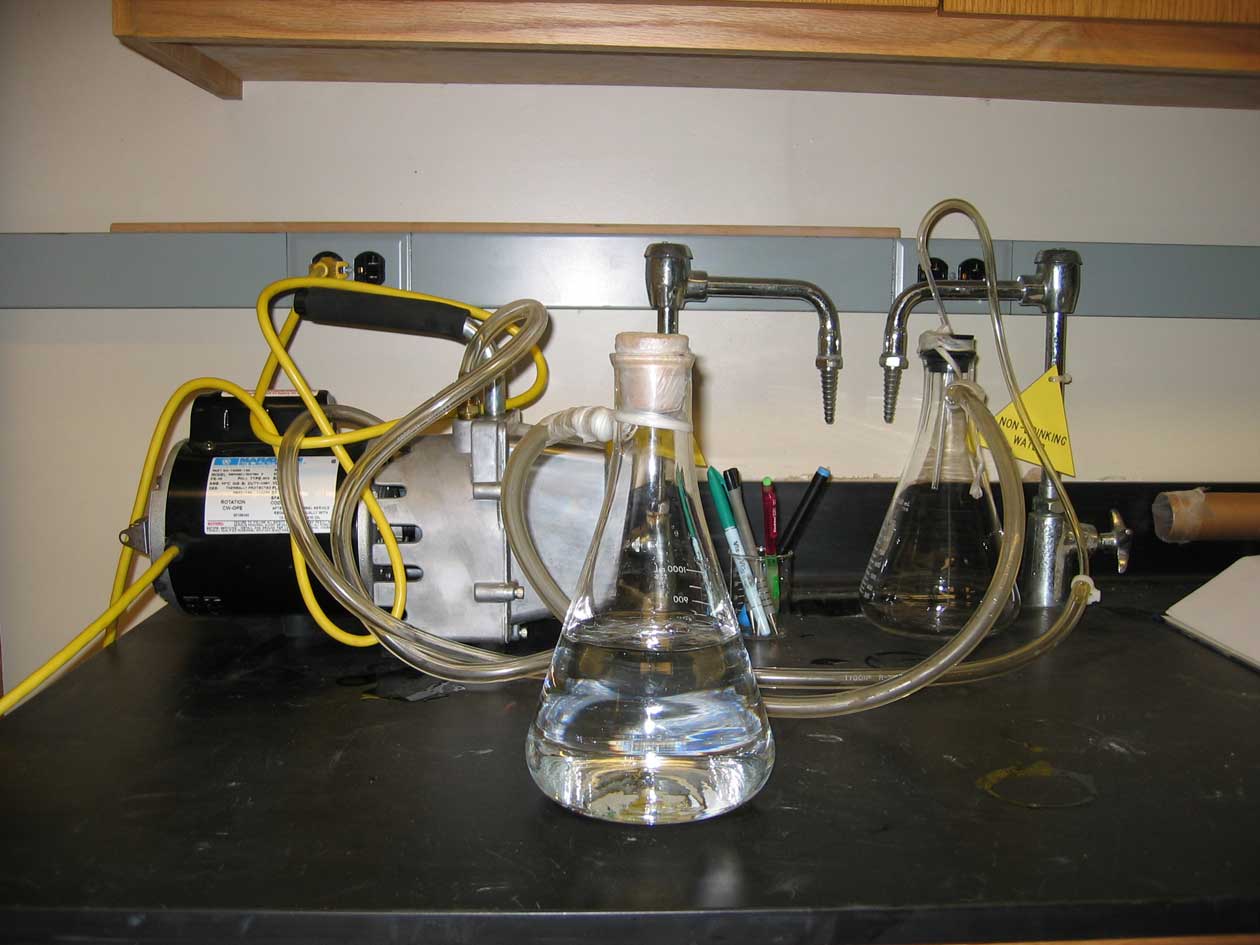How to boil water at room temperature
 A quantity of liquid water kept at room temperature is brought to a boil.
A quantity of liquid water kept at room temperature is brought to a boil.
Ingredients: water, vacuum flask, vacuum tubing, vacuum pump
Procedure: A complete recipe follows.
1. Add liquid water at room temperature to a vacuum flask connected to a vacuum pump.
2. Add intervening "trap" to collect water vapor before it reaches the pump.
3. Turn on pump to lower pressure of air above the room temperature liquid water.
4. Observe behavior of liquid water as it is brought to a boil.
Understanding: The definition of the boiling point of a liquid is the temperature at which the vapor pressure of the water equals the external pressure. The common way that we bring water to its boiling point in a kitchen is to heat a container of water that is open to the atmosphere. The external pressure on the liquid water remains equal to the atmospheric pressure as the water is heated.
As more heat is added to the liquid water, the temperature of the water rises. As the water temperature increases, the average water molecule in the liquid has more energy and is moving faster on average. The faster average motion of the water molecules leads more molecules to escape from the attractive interactions with other water molecules in the liquid. As the temperature of the water increases, it becomes more and more likely that water molecules will escape into the vapor above the liquid. The vapor pressure of the liquid is a monotonically increasing function of the temperature. When the vapor pressure of the heated water equals the external pressure of the atmosphere, the water boils. That temperature is known as the boiling point.
The normal boiling point of the liquid is the temperature at which the liquid boils at one atmosphere of external pressure. For water the normal boiling point is 100C (212F).
In our experiment, the water in our flask has a particular vapor pressure at room temperature. In this experiment, the external pressure is the pressure of the air remaining inside the flask - that is the pressure felt by the water. The vacuum pump is used to lower the external pressure until it equals the vapor pressure of the water. At that point, the water boils - at room temperature!
Exploring the phase diagram of water
Question: On the phase diagram of water, draw the line that represents the path of our experiment. Begin at room temperature and decrease the pressure to the boiling point.Suppose you perform a similar experiment using carbon dioxide. You begin with a piece of solid dry ice at the normal sublimation point. You gradually lower the external pressure of the air surrounding the ice. You continue to lower the external pressure to arbitrarily small values. What do you observe in terms of the phase behavior of carbon dioxide?